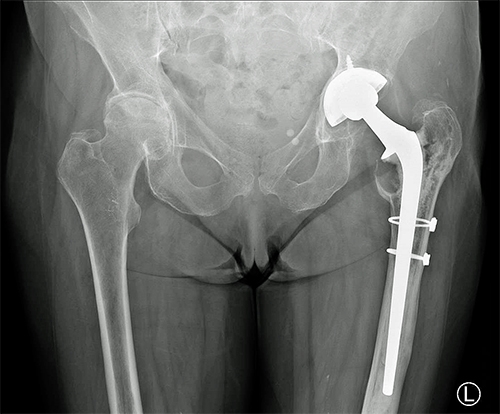QUESTION 4 OF 7
81.An 85-year-old. female attends clinic complaining of a 2-week history of hip pain on weight bearing, groin tenderness on rotation. No history of injury. Her radiographs are shown below. The daughters are in clinic with the patient and mention they have been told their mother needs revision hip surgery

Figure 1.Anteroposterior(AP) radiographs pelvis
The best choice of management would be:
QUESTION ID: 1167